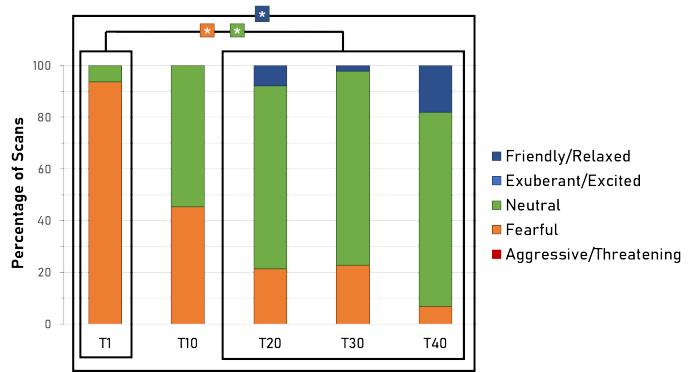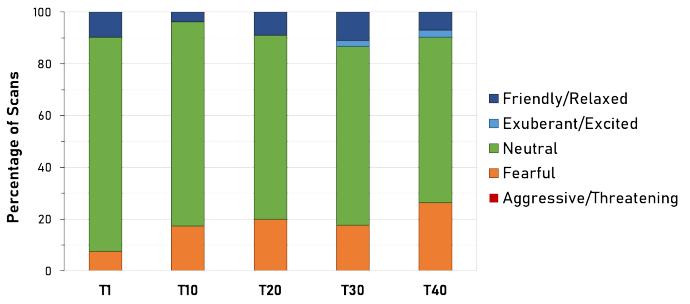Body Posture during Social Rehabilitation sessions
-Stray Group- Related-Samples Friedman's Test
Figure 16 shows the average percentage of scans in the different body postures at time points 1 (T1), 2 (T10), 3 (T20), 4 (T30) and 5 (T40) for Group C2 and the Stray Group. No dog exhibited an aggressive/threatening posture during the assessments.
Significant differences were found for:
- fearful (χ2 (4, N = 6) = 18.655, p=0.001), the stray Group had significantly lower percentages in a fearful percentage after 20 days of social rehabilitation compared to the first session.
- neutral (χ2 (4, N = 6) = 14.800, p=0.005), the stray Group had significantly higher percentages in a neutral percentage after 20 days of social rehabilitation compared to the first session.
- friendly/calm (χ2 (4, N = 6) = 10.400, p=0.034). Over time, the Stray Group was significantly more friendly/calm
- No significant differences were found for exuberant/excited body across the five-time points.

Body Posture during Leash Training Sessions
-Stray Group- Related-Samples Friedman's Test
Figure 10 shows the average percentage of scans in the different body postures at time points 1 (T1), 2 (T10), 3 (T20), 4 (T30) and 5 (T40) for the Stray Group. No dog exhibited an aggressive/threatening posture during the assessments.
- No significant differences were found across time points for any of body postures for the Stray Group

Responsible for this page:
Director of undergraduate studies Biology
Last updated:
06/02/20
